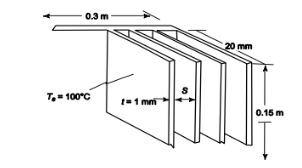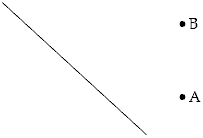If protons have a half-life of 1031 years, what fraction of the original protons have decayed during the 101 year existence of the universe?
a. 1/31
b. 30/31
c. 4 × 10^–7.5
d. 4/10
e. less than any of the above values
e
You might also like to view...
An electronic device is to be cooled in air at 20°C by an array of equally spaced vertical rectangular fins as shown in the sketch below. The fins are made of aluminum and their average temperature, Ts, is 100°C.

Estimate (a) The optimum spacing, s
(b) The number of fins
(c) The rate of heat transfer from one fin
(d) The total rate of heat dissipation
(e) Is the assumption of a uniform fin temperature justified?
GIVEN
? Electronic device with vertical aluminum fins in air
? Air temperature (T?) = 20°C
? Average fin temperature (Ts) = 100°C
FIND
(a) The optimum spacing (s)
(b) The number of fins
(c) The rate of heat transfer from one fin
(d) The total rate of heat dissipation
(e) Is the assumption of a uniform fin temperature justified?
ASSUMPTIONS
? Steady state
? Uniform fin temperature
? The air is still
? Heat transfer from the top and bottom of the fins is negligible
? The heat transfer coefficient on the wall area between the fins is approximately the same as on the fins
PROPERTIES AND CONSTANTS
From Appendix 2, Table 12
For aluminum: Thermal conductivity (kal) = 239 W/(m K) at 100°C
From Appendix 2, Table 28, for dry air at the mean temperature of 60°C


In a single slit diffraction experiment, how does the angle to the first dark fringe depend on the wavelength of the light used?
A. The angle increases as the wavelength increases. B. The angle decreases as the wavelength increases. C. The angle increases as the wavelength decreases. D. The angle does not depend on the wavelength of the light.
What would describe the earliest galaxies?
A) They were free of dark matter. B) They were mostly elliptical galaxies. C) They were mostly spiral galaxies. D) They were undergoing rapid changes. E) They were fully-formed,no longer evolving.
An infinite plane of charge with 

A. ?7.06. B. ?9.98. C. ?14.11. D. +7.06. E. +9.98.